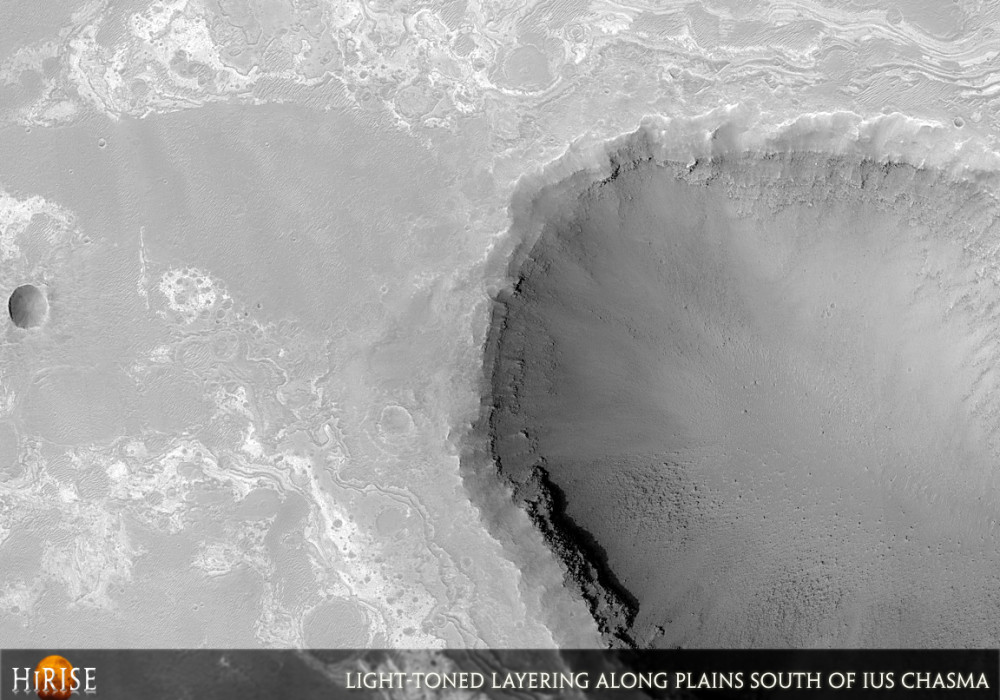Light-toned layering can be seen throughout this image taken along the plains south of Ius Chasma in Valles Marineris.
A portion of one of the troughs of Ius Chasma is visible in the lower right of the image. The layering is exposed where a meters-thick darker unit has been eroded away, suggesting the light-toned layered deposit is more extensive in area than what is visible by exposures along the plains.
The layering could have formed by several processes, including aeolian (wind-blown), fluvial (water-lain), and volcanism. If aeolian, then the material must be located elsewhere on Mars where it was eroded and then subsequently deposited by the wind here along the plains. A fluvial origin implies there was water activity that deposited the light-toned material, although there is no evidence for fluvial activity at this location. Explosive volcanism is a likely process that would have occurred in association with the emplacement of the darker lava flows that make up the plains.
The morphology of the light-toned layering is unlike that seen within Valles Marineris and indicates different processes operated along the plains compared to those that emplaced the deposits within the troughs.Written by: Cathy (19 September 2007)
This is a stereo pair with PSP_005215_1715 .
More info and image formats at http://hirise.lpl.arizona.edu/PSP_005149_1715
Image: NASA/JPL/University of Arizona
